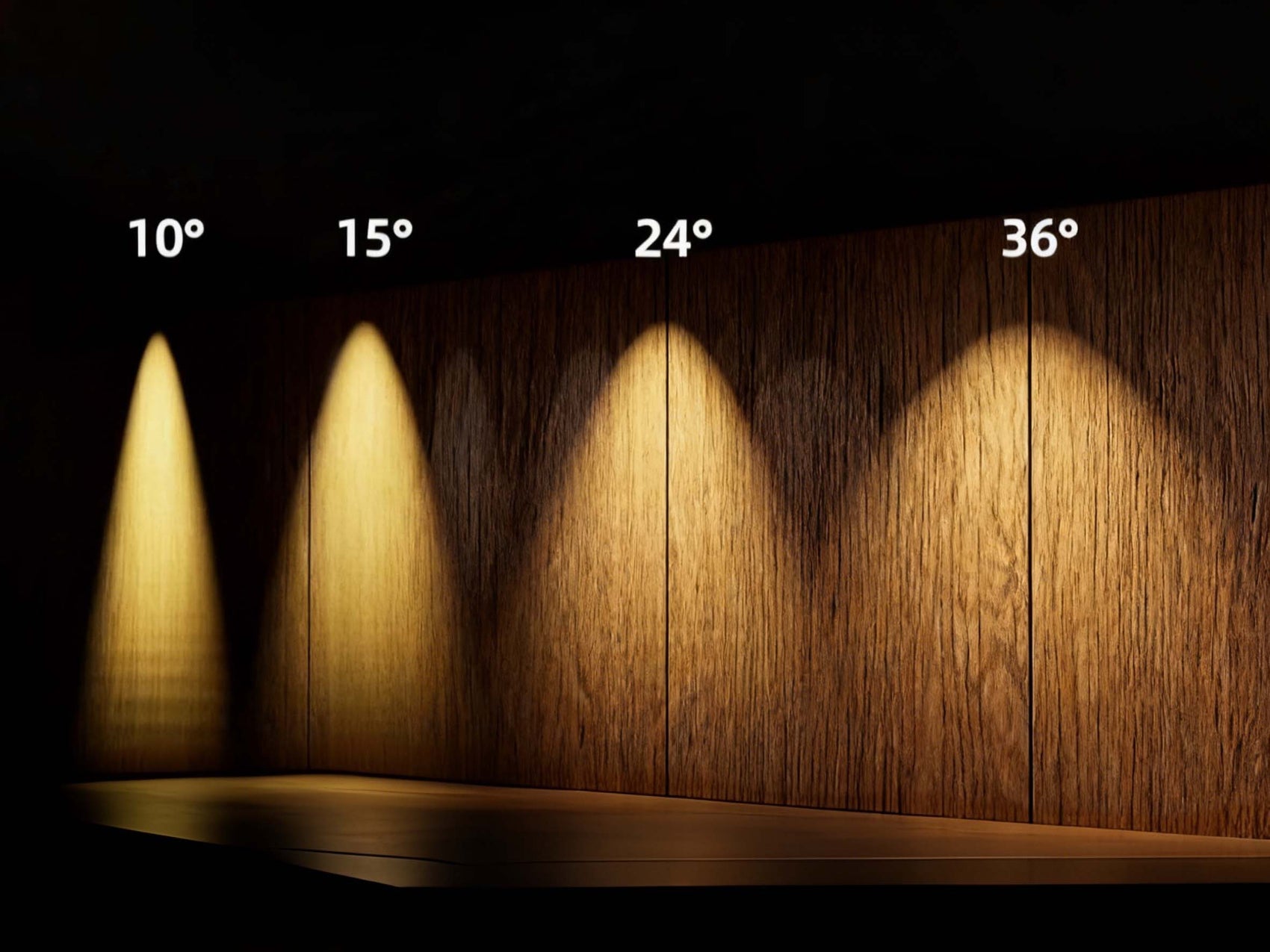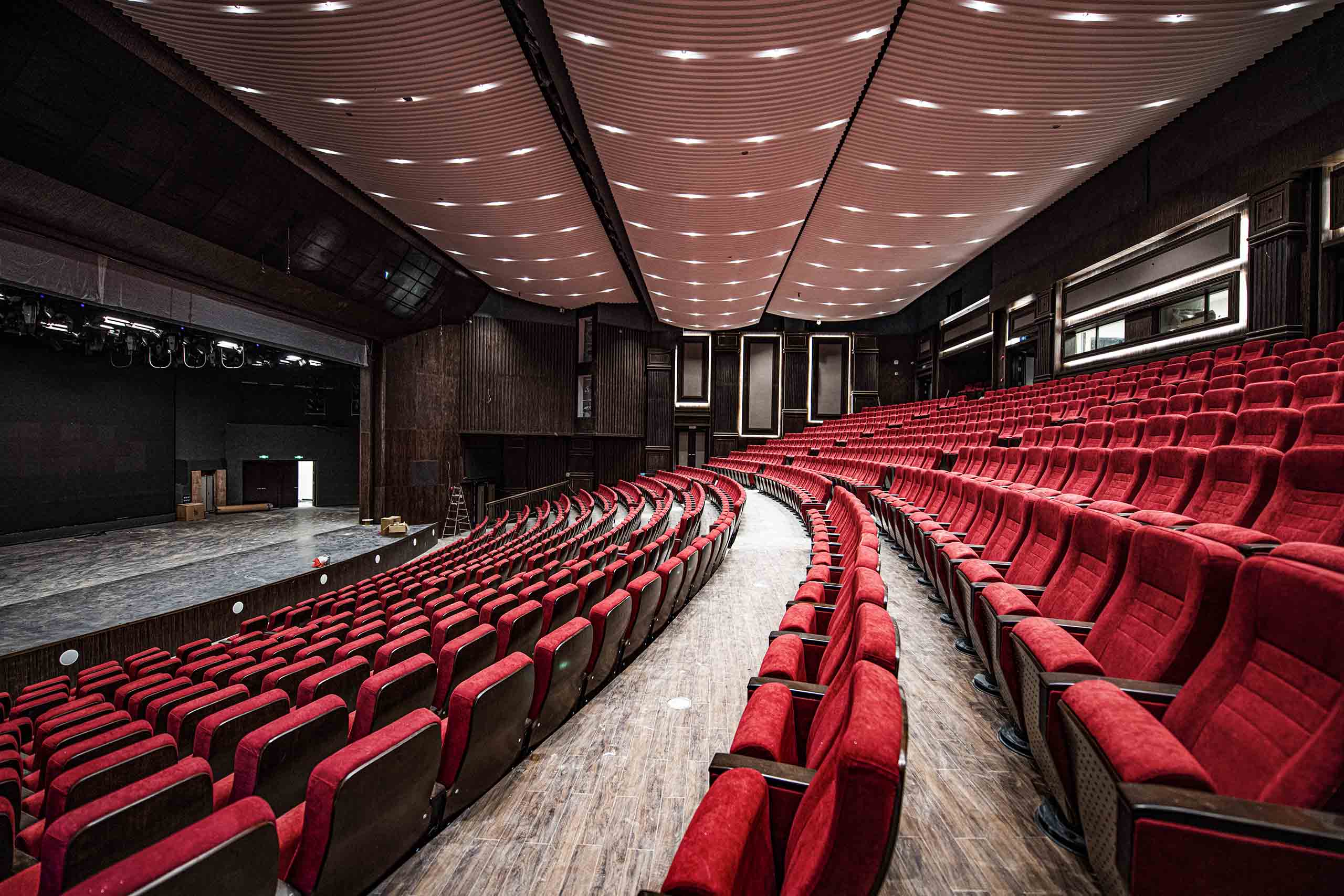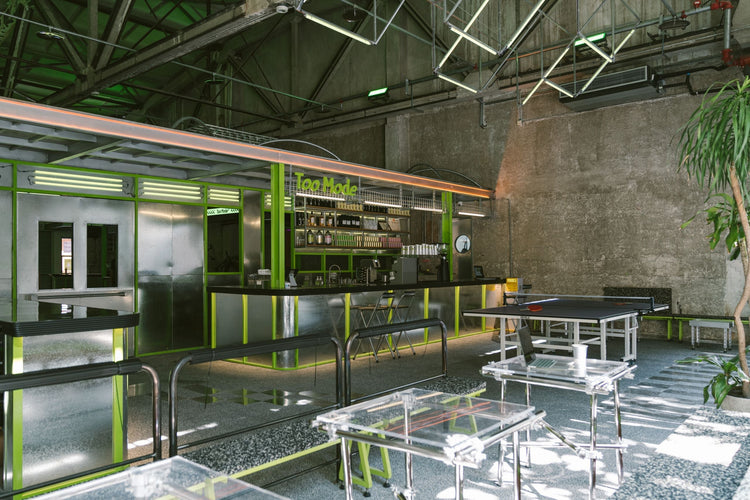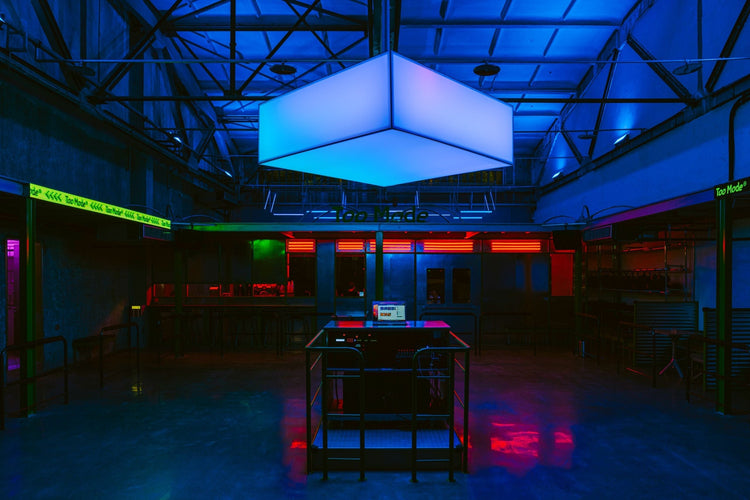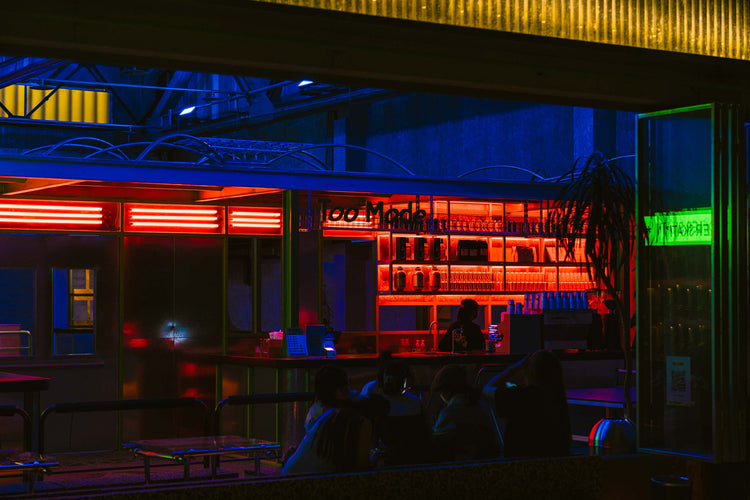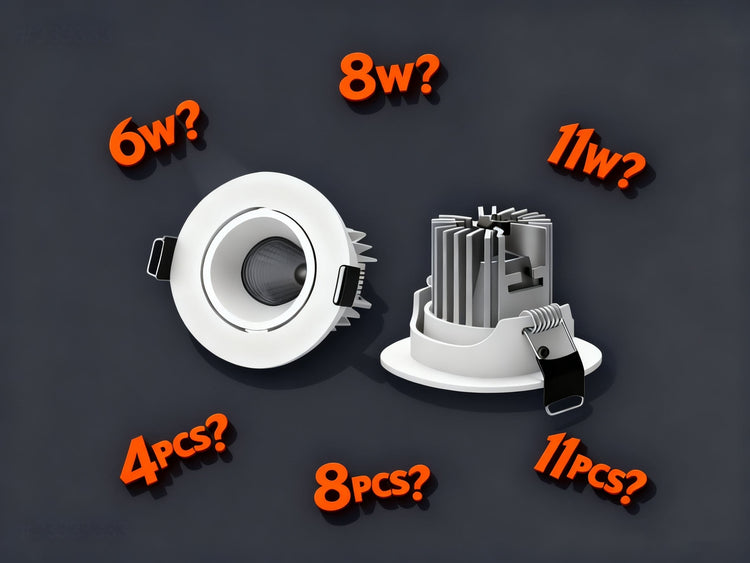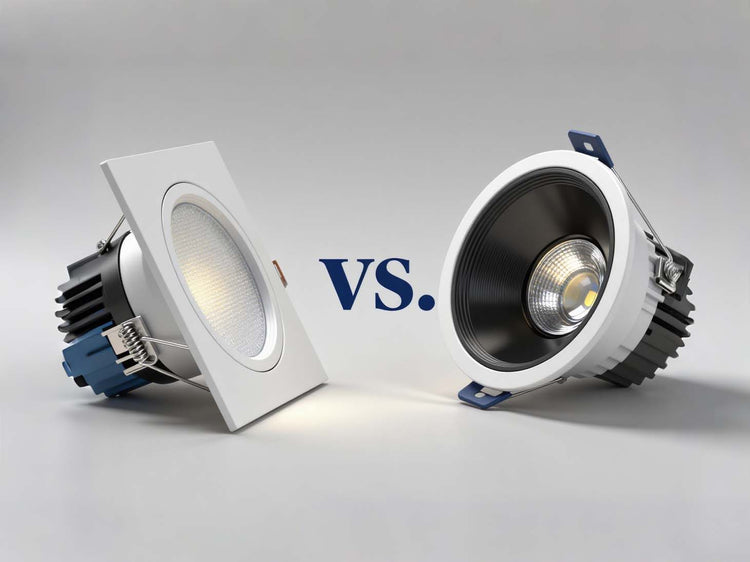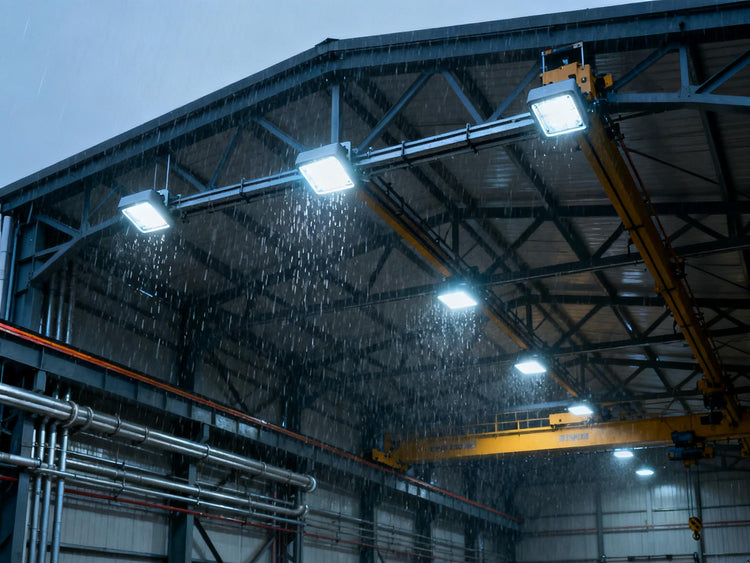In modern lighting design, LED fixtures are the premier choice for energy efficiency. However, technical specs like lumens and color temperature only tell part of the story. The beam angle is a critical but often overlooked, parameter that dictates how light is distributed in a space. Understanding it is the key to creating lighting solutions that are both highly functional and visually comfortable.
This guide will explore the role of beam angles, their application across various environments and provide a practical framework for selection.
What is Beam Angle in Lighting?
Beam angle is a core technical parameter that defines the spread of light from a source. Measured in degrees, it represents the angle at which the light intensity drops to 50% of its maximum value at the center. A smaller angle produces a concentrated, spotlight effect, while a larger angle creates a soft, floodlight effect. Mastering this concept is essential for controlling light distribution, optimizing energy use and achieving the desired aesthetic.

Narrow Beam Angle: Focused Illumination
A narrow beam angle (typically ≤ 30°) concentrates light into a small, focused pool. It acts like a spotlight, creating high contrast and dramatic highlights, making it ideal for accenting specific objects or architectural features.
Wide Beam Angle: Broad and Ambient Light
A wide beam angle (typically ≥ 60°) disperses light over a broad area. It provides general, ambient illumination that minimizes shadows and creates a uniform, welcoming atmosphere, perfect for lighting entire rooms or large spaces.
Why Beam Angle is Crucial for Your Lighting Design?
Beam angle is the critical link between technical specifications and real-world application. It directly enables functional lighting by matching light distribution to a space's specific tasks, from reading a book to inspecting a product. Furthermore, it shapes visual comfort and aesthetic appeal by controlling glare, defining spatial layers, and creating depth. Beyond aesthetics, it is a key driver of operational value, enhancing energy efficiency by maximizing light utilization and contributing to safety by ensuring optimal visibility.
Beam Angle vs. Other Key Metrics: Lumen, CRI, and CCT
To design effectively, one must understand how beam angle interacts with other lighting metrics:
- Beam Angle vs. Lumens: Lumens measure the total quantity of light emitted (the "volume"), while beam angle determines how that light is distributed in space (the "spread").
- Beam Angle vs. CCT (Correlated Color Temperature): The beam angle controls the pattern and intensity of the light, while CCT defines its color and feel (warm vs. cool). Together, they set the mood and focus of a space.
- Beam Angle vs. CRI (Color Rendering Index): The beam angle sets the "stage" for illumination, while CRI determines the authenticity with which object colors appear under that light. A high CRI is crucial wherever color accuracy is important, regardless of the beam angle.
How to Choose the Right Beam Angle?
Selecting the perfect beam angle is about matching the light distribution to your lighting goals. The process can be streamlined by focusing on three primary lighting functions: Accent Lighting, Balance Lighting and General Lighting. The following guide breaks down the ideal beam angles and fixture types for each category.

1. For Accent Lighting: Create Focus and Drama
Accent Lighting is used to highlight specific objects or architectural features, drawing the eye and creating visual interest.
- Recommended Beam Angle: Narrow Beam (10°–25°)
- Why it Works: This range concentrates light intensely into a focused pool, creating strong contrast between the highlighted object and its surroundings. It acts like a spotlight for precise, directional lighting.
- Ideal Applications: Illuminating artwork (paintings, sculptures), retail displays (fashion, electronics, jewelry), task lighting (desks, vanity mirrors), and wall-washing to highlight texture without spill.
- Typical Fixtures: Recessed adjustable downlights, track spotlights, LED projectors, narrow-beam floodlights. These fixtures utilize deep reflectors, small high-transmission lenses, or precision optics to control light distribution.
2. For Balance Lighting: Achieve Functional and Comfortable Illumination
Balance Lighting serves as a versatile middle ground, providing clear, even light for defined zones without being too harsh or too diffuse.
- Recommended Beam Angle: Medium Beam (25°–45°)
- Why it Works: This angle offers a balanced spread that is neither too concentrated nor too wide. It effectively illuminates functional areas with uniform light, minimizing shadows and glare.
- Ideal Applications: Lighting over dining tables, kitchen islands, bedside reading lamps, living room accent areas (sofa, coffee table), and showcasing medium-sized exhibits.
- Typical Fixtures: Recessed downlights, medium-angle ceiling lights, panel lights, commercial track lights, LED floodlights. These are designed with medium-depth reflectors, diffused lenses, or semi-focused optical systems.
3. For General Lighting: Ensure Broad and Uniform Ambiance
General Lighting (or ambient lighting) provides the foundational layer of illumination for a space, ensuring overall brightness and a sense of openness.
- Recommended Beam Angle: Wide Beam (45° and above, including Extra-Wide ≥90°)
- Why it Works: Wide beams provide expansive, even coverage, flooding a space with light to create a comfortable and inviting atmosphere. Extra-wide beams are essential for illuminating large areas uniformly with fewer fixtures.
-
Ideal Applications:
- Standard Wide (45°–90°): Primary ambient lighting in living rooms, bedrooms, hallways, and bathroom ceiling fixtures.
- *Extra-Wide (≥90°):* Large-area lighting for garages, basements, conference rooms, balconies, and kitchens.
- Typical Fixtures: Wide-angle downlights, panel lights, ceiling lights, LED strips, indoor/outdoor floodlights, industrial lights. They incorporate shallow reflectors, large diffusing lenses, light guide plates, or surface-emitting designs with diffusers.
Recommended Beam Angles for Different Applications
The optimal beam angle is ultimately defined by the specific application and environment. The following recommendations provide a practical starting point for selecting beam angles in residential, commercial and industrial settings.
Residential Lighting Beam Angles
- Accent Lighting (15°-24°): Perfect for highlighting artwork, sculptures, or architectural features.
- Task & Zone Lighting (30°-45°): Ideal for providing even, shadow-free light over dining tables, kitchen counters, and reading nooks.
- Ambient Lighting (≥45°): Best for creating a soft, inviting atmosphere in living rooms and bedrooms, ensuring overall brightness.
Commercial Lighting Beam Angles
- Accent & Atmosphere (10°-24°): Used in retail to make products "pop" and in restaurants to create intimate, focused pools of light on tables.
- Functional & Task (25°-40°): Provides even light for office workstations, retail shelves, and restaurant preparation areas to ensure clarity and reduce eye strain.
- Ambient & General (≥45°): Ensures safe, welcoming, and well-lit environments in lobbies, corridors, and large open-plan offices.
Industrial Lighting Beam Angles
- High-Bay & Rack Lighting (15°-30°): Concentrates light downward in high-ceilinged spaces like warehouses, minimizing light loss and ensuring illumination reaches the floor and lower shelving.
- Precision Work (30°-60°): Offers a balance of coverage and brightness on assembly lines and inspection stations, reducing shadows for accurate work.
- Large-Area Coverage (≥60°): Provides wide, uniform illumination for corridors, storage areas, and garages, enhancing safety and allowing for fewer fixtures.
Conclusion: Beam Angle - the Soul of Effective Lighting
The beam angle is far more than a technical specification; it is the soul of your lighting design. It is the defining factor that transforms a space from merely "lit" to effectively illuminated. Neglecting this key parameter can lead to inadequate illumination, visual discomfort and energy waste, regardless of the quality of the fixtures chosen. Therefore, a deliberate and informed selection of the beam angle, aligned with your specific functional and aesthetic goals, is paramount for achieving optimal performance, comfort and efficiency.
Therefore, a deliberate and informed selection of the beam angle, aligned with your specific functional and aesthetic goals, is paramount for achieving optimal performance, comfort, and efficiency. Find the ideal fixtures to bring your vision to light by visiting Lumosmith.com today.

